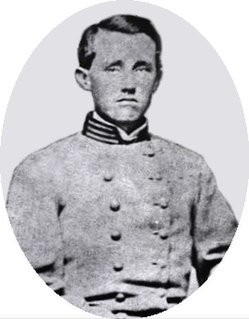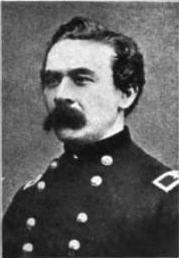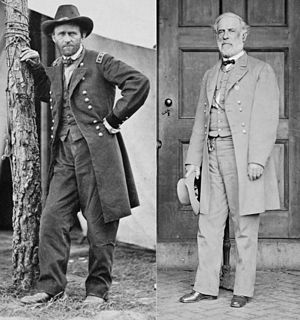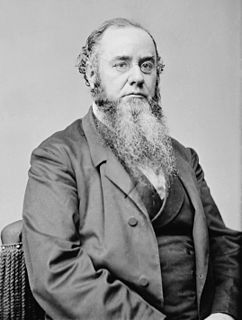
John Henry Hobart Ward, most commonly referred to as J.H. Hobart Ward, was a career United States Army soldier who fought in the Mexican–American War and served in the New York state militia. He also served as a Union general during the American Civil War.

Hiram Berdan was an American engineer, inventor and military officer, world-renowned marksman, and guiding force behind and commanding colonel of the famed United States Volunteer Sharpshooter Regiments during the American Civil War. He was the inventor of the Berdan rifle, the Berdan centerfire primer and numerous other weapons and accessories.

Aaron Fletcher Stevens was a Union Army officer during the American Civil War and a two-term U.S. Congressman.

Thomas Casimer Devin was a United States Army officer and general. He commanded Union cavalry during the American Civil War and during the Indian Wars.

Roy Stone was a Union Army officer during the American Civil War. He is most noted for his stubborn defense of the McPherson Farm during the Battle of Gettysburg. He later served as a general in the Spanish–American War

Abner Monroe Perrin was a Confederate general in the Army of Northern Virginia during the American Civil War.

Micah Jenkins, was a Confederate general in the American Civil War, mortally wounded by friendly fire at the Battle of the Wilderness.
A. P. Hill's Light Division was an infantry division in General Robert E. Lee's Confederate Army of Northern Virginia during the American Civil War. Originally including six brigades, the Division's first commander starting May 27, 1862 was then Major General A. P. Hill. Major Generals William Dorsey Pender and Cadmus M. Wilcox commanded a reorganized Light Division in the Army of Northern Virginia after Hill's promotion to corps command and Pender's death at the Battle of Gettysburg, respectively.

Charles Kinnaird Graham was a sailor in the antebellum United States Navy, attorney, and later a brigadier general in the Union Army during the American Civil War. As a civil engineer, he helped plan and lay out Central Park in New York City.
Thomas Worcester Hyde was a Union Army colonel who subsequently received brevets of brigadier general of volunteers and major general of volunteers in the American Civil War, a state senator from Maine, and the founder of Bath Iron Works, one of the major shipyards in the United States. He wrote two books about his experiences during the war and at the Battle of Gettysburg.
Samuel Perkins Spear was an American soldier who saw combat in the Seminole Wars, the Mexican–American War, and the Civil War.
Sumner Carruth was an officer in the volunteer army of the United States during the American Civil War. He commanded the 35th Massachusetts Volunteer Infantry and eventually rose to the command of two different brigades in the IX Corps.

John Irvin Curtin was a cousin of Pennsylvania governor Andrew Gregg Curtin. He led a regiment and then a brigade in the American Civil War.
Charles A. Heckman was a brigadier general in the Union Army during the American Civil War. He fought in many of the early battles in North Carolina and later served in the Army of the James during the siege of Petersburg.

Thomas Greely Stevenson was a general in the Union Army during the American Civil War. He was killed in action during the battle of Spotsylvania Courthouse.

Alexander Chambers was a US Army officer, who became a general during the American Civil War.

John Caldwell Calhoun Sanders was one the Confederate States Army's youngest brigadier generals during the American Civil War. He was killed in the Battle of Globe Tavern along the Weldon Railroad during the Siege of Petersburg, Virginia on August 21, 1864.

Napoleon Bonaparte McLaughlen was a career United States army officer. He served throughout the American Civil War, winning brevet promotions to Brigadier General of both the U.S. Volunteers and the Regular Army.

James Hagan was a United States Army captain during the Mexican–American War and a Confederate States Army colonel during the American Civil War. He was a prosperous businessman and planter at Mobile, Alabama between the wars.

William Henry Penrose was a United States Army officer who served in the Union Army during the American Civil War. Penrose commanded the First New Jersey Brigade and ended the war with the rank of brigadier general.



























